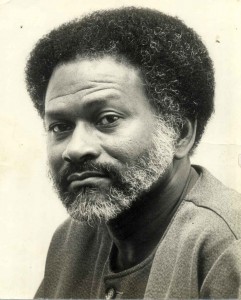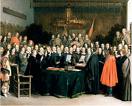Kecia Rust – Perspectives On South Africa’s Affordable Housing Market: Current Trends And Issues
housingfinanceafrica.org – June 2012. This presentation provides a brief overview of South Africa’s affordable housing market, the housing subsidy regime and an overview of the Finance Linked Individual Subsidy that was introduced in April 2012. The presentation then considers four key challenges facing the affordable housing market and the success of the FLISP: affordability and credit indebtedness, access to mortgage finance, housing supply and the sustainability of the subsidy programme. Within this evolving policy environment, practitioners – developers and lenders – need to look for opportunities. These are also suggested.
Read more: http://www.housingfinanceafrica.org/current-trends-and-issues/
Moladi: Developing Affordable Housing Solutions in South Africa
www.inclusivebusiness.org. Moladi, a small family-run business based in South Africa’s Eastern Cape Province, is innovating to address the challenge building sustainable housing for low-income communities. It utilizes a unique plastic injection molded technology to produce cast-in-place mortar structures. The process allows unskilled laborers to use indigenous materials to quickly and cheaply construct high standard permanent buildings that are earthquake, cyclone and tsunami resistant.
Read more: http://www.inclusivebusiness.org/2011/01/moladi-affordable-housing.html
NextBillion And Ashoka Launch Affordable Housing E-book – The Big Idea: Global Spread Of Affordable Housing
Until today, affordable housing has not received much attention from social entrepreneurs but this is about to change. NextBillion and Ashoka recently launched the e-book The Big Idea: Global Spread of Affordable Housing with the aim to foster an important dialogue about the need for access to affordable homes.
The e-book serves as a call to action for both social entrepreneurs and impact investors. The authors point out that housing is closely tied to all the other issues that are being addresses and is therefore a crucial area of social entrepreneurship. It is tied to everything from healthcare, energy, water and sanitation to education. As housing is one of the most challenging and complex sectors of social entrepreneurship, it urgently needs more patient capital and committed entrepreneurs to take the plunge.
Download the book: http://socialentrepreneurshipasia.wordpress.com/affordable-housing/
The Netherlands – Digital Museum Of Public Housing And Aedes Archive
 socialhistory.org. Amsterdam. In honour of the centennial anniversary of the Housing Act, the IISH was commissioned to compile a digital museum of public housing in 2001. The foundation consisted of the archives and the photograph collection of Aedes, the umbrella of housing construction associations.
socialhistory.org. Amsterdam. In honour of the centennial anniversary of the Housing Act, the IISH was commissioned to compile a digital museum of public housing in 2001. The foundation consisted of the archives and the photograph collection of Aedes, the umbrella of housing construction associations.
The website features the chief developments in Dutch social housing construction in the twentieth century. The century of public housing began with the Housing Act of 1901. This act introduced quality standards for construction and regulated government funding for municipalities and housing construction firms. The resulting developments consisted of stereotypical townhouses, as well as suburbs, blocks of flats and working-class estates, which is most of the housing that surrounds us today.
Fifty-one projects were selected for the new web site: five housing development projects typical of each decade, representing a national cross-section wherever possible. Each project presented features background information and five images. Viewers select housing by period, as well as by project, place, street, province, year, housing construction association and architect or a combination of these criteria.
The Digital Museum is linked to the Museum Het Schip web site, which is the Information and documentation centre for public housing in Amsterdam. Guided tours and exhibitions are organized at Poste Restante, which is located at the former post office in Het Schip. The programme council Wij wonen – 100 jaar Woningwet, is a collaborative effort between the City of Amsterdam, the Stedelijke Woningdienst Amsterdam and the districts, with financial support from the Amsterdamse Federatie van Woningcorporaties.
Read more: http://socialhistory.org/en/collections/aedes-archive
Victoria Cronin & Peter Guthrie – Alternative Approaches to Slum Upgrading in Kibera, Nairobi
Urban Design and Planning – Volume 164 Issue DP2 –
Proceedings of the Institution of Civil Engineers – Urban Design and Planning 164 June 2011 Issue DP2 – Pages 129–13 – ICE Publishing: All rights reserved
This paper discusses the sustainability of two different approaches to upgrade water and sanitation infrastructure in Kenya’s largest informal settlement, Kibera. A background to the urbanisation of poverty is outlined along with approaches to urban slums. Two case studies of completed interventions of infrastructure upgrading have been investigated. In one case study, the upgrading method driven by a non-government organisation uses an integrated livelihoods and partnership technique at community level to create an individual project. In the other case study, the method is a collaboration between the government and a multi-lateral agency to deliver upgraded services as part of a country-wide programme. The ‘bottom-up’ (project) and ‘top-down’ (programme) approaches both seek sustainability and aim to achieve this in the same context using different techniques. This paper investigates the sustainability of each approach. The merits and challenges of the approaches are discussed with the projected future of Kibera. The paper highlights the valuable opportunity for the role of appropriate engineering infrastructure for sustainable urban development, as well as the alleviation of poverty in a developing context.
Read more: Alternative Approaches to Slum Upgrading in Kibera, Nairobi
Wan Bon – Wan Sranan – Wan Pipel: Robin ‘Dobru’ Raveles 1953-1983
Op 2 december 2002 maakte ik mijn opwachting bij Yvonne Raveles-Resida, aan de Van Rooseveltkade 34 in Paramaribo, om met haar te bespreken of in januari 2003 aan de biografie kon worden begonnen. Op 8 januari – een voor mij belangrijke dag – zou ik een aanvang maken met het doorspitten van de persoonlijke archieven van Robin Raveles. De trap naar boven leidde naar zijn studeerkamer aan de voorzijde van het huis met een balkon uitkijkend op de Nederlandse ambassade. De hoeveelheid verzamelde kranten, epistels, paperassen die uit de dozen te voorschijn kwam, zag er overweldigend uit. Zittend aan Dobru’s schrijftafel bestudeerde ik dag na dag de documenten. Zou het lukken om in de komende twee maanden van mijn verblijf in Suriname een goede eerste screening te maken? Selectie van de meest relevante en interessante stukken zou een van de grootste problemen worden.
Welke criteria zou je moeten hanteren om tot een uiteindelijke selectie te komen? Eddy Bruma, oud-voorzitter van de PNR, had gelijk toen hij zei dat Dobru de beste verzamelaar is geweest die hij had gekend. In de studeerkamer bevonden zich, naast zijn eigen publicaties, ook rijen boeken, gesigneerd door collega-schrijvers uit het Caraïbisch gebied en Latijns-Amerika onder wie Edward Kamau Brathwaite, Ernesto Cardenal, Jan Carew, Martin Carter, Selwyn Cudjoe, Nicolás Guillén, Earl Lovelace, George Lamming, Andrew Salkey en A.J. Seymour. Oude anthologieën maakten ook deel uit van de collectie, onder andere Caribbean Voices. An Anthology of West Indian Poetry (1968) en A Treasury of Guyanese Poetry (1980). Ook de Surinaamse schrijvers Trefossa, Slory, Shrinivási, Ooft, Doelwijt, Verlooghen en vele anderen waren goed vertegenwoordigd. Voorts waren er talloze losse vellen met aan hem toegestuurde gedichten en een groot aantal boeken aan Dobru opgedragen van auteurs die hij tot schrijven had aangemoedigd.



